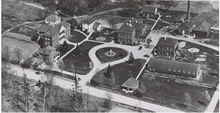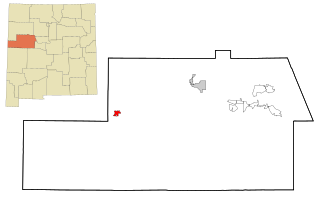
Pinehill or Pine Hill is a census-designated place in Cibola County, New Mexico, United States. It is located on the Ramah Navajo Indian Reservation. The population was 88 at the 2010 census. The location of the CDP in 2010 had become the location of the Mountain View CDP as of the 2020 census, while a new CDP named "Pinehill" was listed 8 miles (13 km) further south, at a point 4 miles (6 km) southeast of Candy Kitchen.
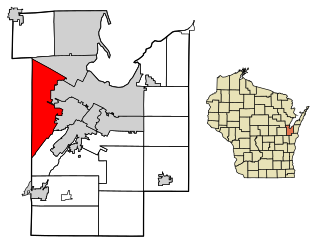
Hobart is a village in Brown County in the U.S. state of Wisconsin. The population was 10,211 at the 2020 census. Hobart is a part of the Green Bay Metropolitan Statistical Area. The village is located entirely within the treaty boundaries of the Oneida Nation of Wisconsin.
Duckwater is an unincorporated community located in the central portion of the U.S. state of Nevada, in the Duckwater Valley at about the same latitude as Sacramento, California. It is in Nye County, at the eastern edge of the Duckwater Indian Reservation, near the Red Mountain Wilderness at the end of Nevada State Route 379. The city of Las Vegas is about 200 miles (320 km) to the south-southeast.
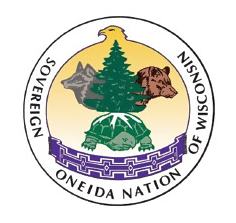
The Oneida Nation is a federally recognized tribe of Oneida people in Wisconsin. The tribe's reservation spans parts of two counties west of the Green Bay metropolitan area. The reservation was established by treaty in 1838, and was allotted to individual New York Oneida tribal members as part of an agreement with the U.S. government. The land was individually owned until the tribe was formed under the Indian Reorganization Act of 1934.

The College of Menominee Nation (CMN) is a private tribal land-grant community college. Chartered by the Menominee Nation, the college's main campus is in Keshena, Wisconsin; another is in Green Bay, near the reservation of the Oneida Nation of Wisconsin. It is one of two tribal colleges in Wisconsin.
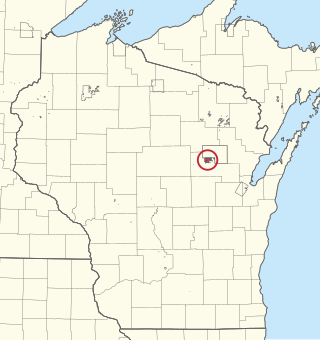
The Stockbridge–Munsee Community, also known as the Mohican Nation Stockbridge–Munsee Band, is a federally recognized Native American tribe formed in the late eighteenth century from communities of so-called "praying Indians", descended from Christianized members of two distinct groups: Mohican and Wappinger from the praying town of Stockbridge, Massachusetts, and Munsee (Lenape), from the area where present-day New York, Pennsylvania and New Jersey meet. Their land-base, the Stockbridge–Munsee Indian Reservation, consists of a checkerboard of 24.03 square miles (62.2 km2) in the towns of Bartelme and Red Springs in Shawano County, Wisconsin. Among their enterprises is the North Star Mohican Resort and Casino.

The Ramah Navajo Indian Reservation is a non-contiguous section of the Navajo Nation lying in parts of west-central Cibola and southern McKinley counties in New Mexico, United States, just east and southeast of the Zuni Indian Reservation. It has a land area of 230.675 sq mi (597.445 km2), over 95 percent of which is designated as off-reservation trust land. According to the 2000 census, the resident population is 2,167 persons. The Ramah Reservation's land area is less than one percent of the Navajo Nation's total area.
Gallup-McKinley County Schools (GMCS) is a school district based in Gallup, New Mexico which serves students from Gallup and surrounding areas of McKinley County.

The Humboldt County School District is a public school district serving K−12 education in Humboldt County, Nevada, in the northwestern part of the state.

The Duckwater Shoshone Tribe of the Duckwater Reservation is a federally recognized tribe of Western Shoshone, based in central Nevada in the high desert Railroad Valley, in northern Nye County. Their autonym is Tsaidüka in their Shoshoni language, meaning "Eaters of tule."

The Bureau of Indian Education (BIE), headquartered in the Main Interior Building in Washington, D.C., and formerly known as the Office of Indian Education Programs (OIEP), is a division of the U.S. Department of the Interior under the Assistant Secretary for Indian Affairs. It is responsible for the line direction and management of all BIE education functions, including the formation of policies and procedures, the supervision of all program activities, and the approval of the expenditure of funds appropriated for BIE education functions.

Havasupai Elementary School (HES) is a Bureau of Indian Education (BIE)-operated K-8 school in Supai, Arizona. It serves the Havasupai Indian Reservation.
St. Francis Indian School is a K-12 Native American school in St. Francis, South Dakota. It is tribally controlled and is affiliated with the Bureau of Indian Education (BIE).
Circle of Nations Wahpeton Indian School, formerly Wahpeton Indian School, is a tribally-controlled grade 4-8 school in Wahpeton, North Dakota.

Many Farms Community School, Inc. (MFCS), is a tribally controlled K-8 school in Many Farms, Arizona, operated by the Navajo Nation. It is funded by the Bureau of Indian Education (BIE). MFCS has a boarding program to serve students who live at a distance from this community.
Pine Hill Schools is a K-12 tribal school system operated by the Ramah Navajo School Board, Inc. (RNSB), in association with the Bureau of Indian Education (BIE), in Pine Hill, New Mexico.
Crow Creek Tribal School (CCTS) is a tribal K-12 school in Stephan, South Dakota, on the Hunkpati Sioux Reservation. It is associated with the Bureau of Indian Education (BIE), and covers grades K-12. As of 2021 it had about 600 students.
Belcourt School District #7 (BSD#7) is a school district headquartered in Belcourt, North Dakota. In addition to Belcourt, it serves Green Acres, St. John, and almost all of Shell Valley. It is the school district of the Turtle Mountain Indian Reservation.
Pierre Indian Learning Center (PILC), also known as Pierre Indian School Learning Center, is a grade 1-8 tribal boarding school in Pierre, South Dakota. It is affiliated with the Bureau of Indian Education (BIE).
Joseph K. Lumsden Bahweting Anishnabe School is a Bureau of Indian Education (BIE)-affiliated tribal school and an affiliated charter school in Sault Ste. Marie, Michigan. It is a K-8 school.
